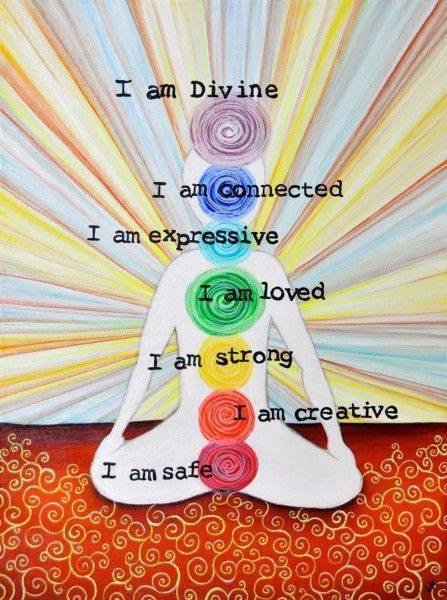About Chakras
I consider myself very fortunate to receive positive feedback from yoga students after classes, and every now and again the theme of the feedback is so widespread and passionate that it is clear something resonated deeply with students. The most recent example of this was a chakra-awakening guided meditation.
The positive feedback and gratitude were wonderful and some yogis requested more information about the chakras. I love the curiosity and engagement that underpins questions, feedback and comments and thought I’d respond with this blog to share with our yoga community.
According to yogic philosophy the body comprises between 72,000 and 350,000 nadis or subtle channels through which our life-force or prana flows. First mentioned in the Upanishads around the 7th century BCE the nadis are invisible and undetectable and arise from the kunda near the navel. There are thought to be three primary nadis; the Sushumna (often called the “central energy channel”) which moves up from the base of the spine; the Ida and the Pingala that criss-cross back and forth, from the left and right nostril to the base of the spine. In the Hatha yoga tradition the chakras (energy wheels) occur at the junctions of the major nadis as they spiral along the spine. Chakras are usually described as wheels of energy that receive, assimilate and transmit Shakti (divine feminine energy) are the major psycho-spiritual-energetic centres of the subtle body. In the tantric model it is widely accepted that there are seven chakras. Like the nadis, chakras are invisible, they do not manifest as physical organs or tangible parts of the physical body. Chakras are said to be part of a higher energy system than that of the physical body and they must be in balance for the kundalini energy at the base of the spine to be awakened (said to be like a sleeping serpent during normal consciousness). The awakening leads to a state of samadhi where the yogi is completely detached from material existence and experiences unification with cosmic consciousness.
The Seven Chakras:
The Root or Muladhara chakra is located at the base of the spine and is often depicted as a red four petaled lotus. It governs the primal urges: safety, security, reproduction. In many ways it reminds me of the base of Maslow’s Hierarchy of Needs (for those who are familiar with Maslow). The sound is Lam. Earth element.
The Sacral or Svadhisthana chakra is located at the pelvis and is often depicted as an orange six petaled lotus. It governs the regulation of emotions. The sound is Vam. Water element.
The Navel or Manipura chakra is located just below the navel and is depicted as a downward facing yellow triangle. It governs willpower, self-esteem and vitality. The sound is Ram. Fire element.
The Heart or Anahata chakra is located at the heart centre and is depicted as a green six- pointed star surrounded by 12 lotus petals. It is said to be the home of the higher/infinite self and governs emotional qualities such as peace, love and openness. The sound is Yam. Air element.
The Throat or Vishuddha chakra is located near the base of the throat and is depicted as a blue downward facing triangle inside a lotus with 16 purple petals. The sound is Ham. Ether element.
The Third-Eye or Ajna chakra is located between the eyebrows and is represented by a transparent lotus with two white petals. It is considered the seat of the mind, of conscious and unconscious awareness, beyond the physical elements it is not associated with any element. Sound is Om.
The Crown or Sahasrara chakra is located just above the crown of the head. Sahasrara means thousand petal lotus. It can be clear, light pink or purple. Said to be the doorway to pure consciousness or bliss consciousness. It is not associated with any element. Sound is Om.
I hope this blog encourages you to expand your curiosity further both on and off the mat. We will delve into yoga philosophy, principles, and subtle energies such as chakras in greater depth at Anvaya Yoga Waterside Yoga Shala.


